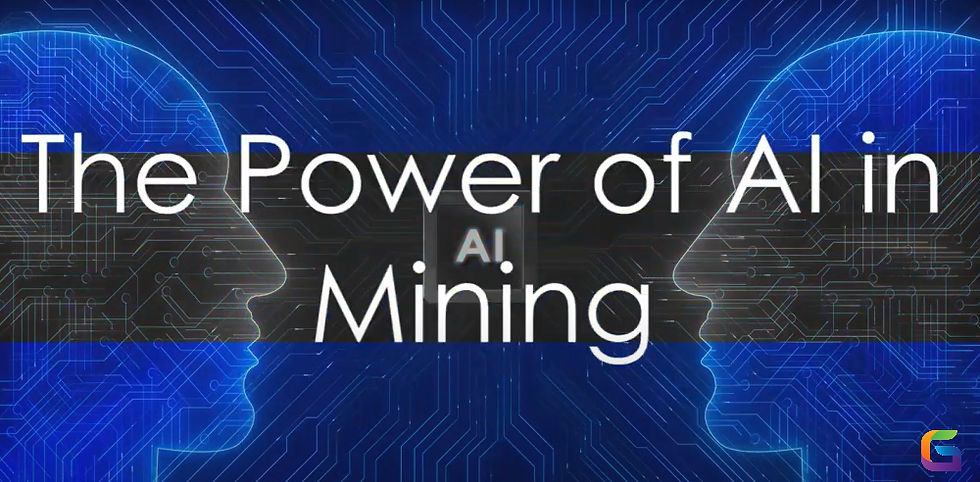How AI Is Revolutionizing Urban Planning and Smart Cities.
- Howard Krinitzsky

- Jul 10
- 3 min read
As the world's population continues to grow, cities are becoming dynamic, complex systems that require data-driven, intelligent design. The development of smart cities and urban planning has seen a revolution due to artificial intelligence (AI). Cities can now optimise infrastructure, improve service delivery, and improve the quality of urban life by combining AI with Geographic Information Systems (GIS), the Internet of Things (IoT), and real-time data analytics.
In this blog, we examine how AI technologies—from autonomous systems to predictive modelling—are changing urban planning and paving the way for tomorrow's smart cities.

AI-Powered Urban Planning: The Foundation of Cities of the Future
The complexity and size of contemporary cities frequently prove too much for traditional urban planning techniques to handle. AI transforms the procedure by:
Predictive Urban Modelling
To model and simulate land-use change, urban expansion, and population dynamics, machine learning algorithms—particularly deep learning and reinforcement learning—analyse historical spatial-temporal data. Planners can use this predictive modelling to help them make data-driven choices about public amenities, transportation systems, and zoning.
Generative Design for Infrastructure
Multiple infrastructure design scenarios are automatically generated using AI-powered generative design tools (such as GANs and evolutionary algorithms) based on urban limitations and optimisation criteria like land cost, walkability, and energy efficiency.
Natural Language Processing (NLP) for Policy Insights
In order to comprehend urban demands and match planning initiatives with public opinion and legal frameworks, natural language processing (NLP) approaches extract important insights from policy texts, citizen comments, and social media.
AI and Smart Cities: Real-Time Intelligence for Urban Ecosystems
Digital technologies are integrated into smart cities to improve resource, asset, and service management. AI serves as these interrelated systems' brain:
Intelligent Traffic Management
Real-time congestion prediction, anomaly detection, and signal timing optimization are all made possible by smart traffic systems that use AI-based video analytics and computer vision. Reinforcement learning methods shorten travel times and enhance public transportation routing.
Energy Optimization and Smart Grids
By anticipating consumption trends, including renewable energy sources, and reducing outages, artificial intelligence algorithms optimize the distribution of energy throughout smart networks. Demand-side load forecasting uses methods such as support vector machines and neural networks.
Waste and Water Management
AI models make it possible to schedule waste collection automatically based on usage trends and sensor data. In a similar vein, AI is used by smart water management systems to monitor water quality, estimate use, and detect leaks using IoT and anomaly detection algorithms.
Urban Sensing and Remote Monitoring
AI gives urban planners high-resolution, multi-temporal insights when paired with satellite data and remote sensing:
Land Use/Land Cover (LULC) Classification
CNNs and U-Net, two deep learning models, accurately characterize urban land use from satellite data. These realizations help control urban sprawl and protect green areas.
Urban Heat Island Detection
Urban heat islands are identified by AI-powered thermal analytics using satellite imagery, which aid planners in putting reflecting surfaces, tree planting, and green roofing regulations into practice.
Air Quality and Pollution Forecasting
In order to enhance climate-resilient city planning, spatiotemporal AI models such as kriging-based interpolation and LSTM networks are used to map and forecast urban air quality.
AI for Urban Safety and Surveillance
AI plays a key role in proactive crime prevention and disaster management, and public safety is a fundamental component of smart cities:
Computer Vision: AI recognizes anomalous activity in CCTV footage to provide real-time threat notifications.
Predictive policing involves carefully allocating law enforcement resources by analysing historical crime data.
Disaster Response AI: For quick reaction and rescue efforts, NLP and geospatial AI models mine social media and emergency reports for relevant insights.
Citizen-Centric AI Applications
AI enables local officials to improve citizen participation and provide individualized services:
Chatbots & Virtual Assistants: AI-powered chatbots handle grievances, process permits, and offer 24/7 municipal services.
Participatory Planning: AI analyses user input to produce simulations and planning suggestions that meet public expectations.
Digital Twins of Cities: These artificial intelligence (AI) and Internet of Things (IoT)-powered virtual models allow for real-time scenario testing and urban experimentation.
Artificial intelligence is changing the urban fabric itself, not merely enhancing urban planning. AI is at the core of next-generation smart cities, from digital twins and real-time citizen services to smarter mobility and sustainable infrastructure. The combination of AI and urban development will yield hitherto unheard-of benefits for humanity as AI models grow more reliable, understandable, and equitable.
Future cities will not only be smarter—they will be adaptive, inclusive, and resilient.
For more information or any questions regarding geospatial AI, please don't hesitate to contact us at
Email: info@geowgs84.com
USA (HQ): (720) 702–4849
(A GeoWGS84 Corp Company)




Comments